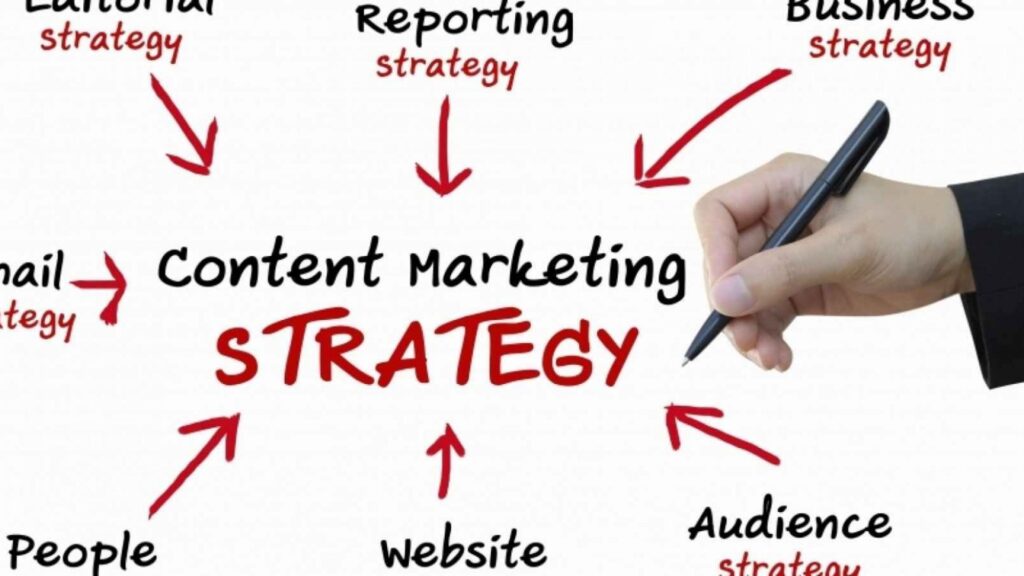Being Needed, Not Needy: How To Create Content People Want

It’s simple to create content just for the sake of making it, without thinking about whether it will actually resonate with your audience, in the wide digital environment of content creation. The secret to success is to produce material that satisfies a real need or want rather than inundating people with it. Put differently, it’s about being useful rather than selfish. So, how can you make sure that the information you offer is something that readers would genuinely be interested in? Now let’s discuss some tactics. Understand Your Audience The foundation of creating content that people want lies in understanding your audience. Take the time to research their demographics, interests, and pain points. What challenges are they facing? What questions do they have? By gaining insights into their needs, you can tailor your content to provide valuable solutions and information. Provide Value Your content should offer something of value to your audience. Whether it’s educational, entertaining, or inspirational, it should enrich their lives in some way. This could be through practical tips, in-depth analysis, or compelling storytelling. Always ask yourself: Does this content address a specific need or interest of my audience? Be Authentic Authenticity is crucial in today’s digital age. People are drawn to content that feels genuine and relatable. Don’t try to mimic other creators or adopt a persona that isn’t true to who you are. Instead, let your unique voice and perspective shine through in your content. Authenticity in content marketing builds trust and fosters a deeper connection with your audience. Listen and Engage Building a two-way relationship with your audience is essential. Listen to their feedback, comments, and suggestions. What are they saying about your content? What do they want to see more of? Engage with them genuinely, whether it’s through responding to comments, hosting Q&A sessions, or conducting polls. By actively involving your audience, you demonstrate that their opinions matter, and you can tailor your content accordingly. Stay Relevant The field of digital marketing is constantly evolving, and so are the needs and interests of your audience. Stay abreast of current trends, topics, and discussions within your niche. Keep your content fresh and relevant by addressing timely issues and providing insights into emerging trends. This shows that you’re attuned to the pulse of your audience and the broader industry. Quality Over Quantity In the age of information overload, quality trumps quantity. Instead of churning out content at a rapid pace, focus on creating high-quality, well-researched pieces that offer depth and value. A single piece of exceptional content can have a far greater impact than a dozen mediocre ones. Prioritize substance, clarity, and relevance in your content creation process. Diversify Your Content People have different preferences when it comes to consuming content. Some may prefer articles, while others gravitate towards videos, podcasts, or infographics. Diversify your content formats to cater to varied preferences and maximize your reach. Experiment with different mediums to see what resonates best with your audience. Optimize for Search and Social Make it easy for people to discover your content by optimizing it for search engines and social media. Use relevant keywords, hashtags, and meta descriptions to improve your visibility and reach. Share your content across various social media platforms and engage with communities related to your niche. By optimizing your content for search and social, you increase its chances of being found and shared by your target audience. In conclusion, creating content that people actually want involves understanding their needs, providing value, and fostering authentic connections. By focusing on being needed rather than needy, you can create content that resonates deeply with your audience and establishes you as a trusted authority in your niche. Remember to listen, adapt, and always strive to deliver content that enriches the lives of your audience.
What is Digital PR and How Can You Develop an Effective Strategy?

Public relations (PR) has expanded to include a wider range of activities defined as “Digital PR” in today’s digital environment, moving beyond the traditional media outreach. This innovative marketing strategy makes use of digital platforms to improve brand recognition, engagement, and visibility. We’ll examine what digital PR is all about in this article and look at some tactics for creating an effective campaign. What is Digital PR? Digital PR involves utilizing digital platforms such as social media, online publications, blogs, influencers, and search engines to manage a brand’s reputation and connect with its audience. Unlike traditional PR, Digital PR focuses on maximizing online exposure, generating buzz, and fostering relationships in the digital realm. Components of an Effective Digital PR Strategy: Define Objectives: Begin by outlining clear objectives aligned with your overall digital marketing goals. Whether it’s increasing brand awareness, driving website traffic, or enhancing online reputation, defining specific objectives will guide your strategy. Audience Research: Understand your target audience’s preferences, behaviors, and online habits. This insight will inform your content creation and outreach efforts, ensuring they resonate with the intended audience. Content Creation: Develop compelling and shareable content tailored to your audience’s interests. This may include press releases, blog posts, infographics, videos, or interactive media. High-quality content forms the foundation of any successful Digital PR campaign. Media Relations: Forge relationships with journalists, bloggers, influencers, and industry experts in your niche. Engage with them through personalized pitches, press releases, guest contributions, and media partnerships to secure coverage and endorsements. Social Media Engagement: Leverage social media platforms to amplify your brand’s message, engage with followers, and cultivate a community around your brand. Share relevant content, participate in conversations, and monitor feedback to maintain a positive online presence. SEO Integration: Integrate search engine optimization (SEO) techniques into your Digital PR efforts to improve visibility and organic search rankings. Optimize press releases, guest posts, and online content with relevant keywords and backlinks to enhance discoverability. Measurement and Analysis: Monitor the performance of your Digital PR activities using key metrics such as website traffic, social media engagement, brand mentions, and backlinks. Analyze data regularly to identify areas of improvement and refine your strategy accordingly. In a Nutshell: Digital PR offers unparalleled opportunities to elevate your brand’s presence and reputation in the digital landscape. By adopting a strategic marketing approach focused on audience engagement, content excellence, and relationship-building, businesses can cultivate a robust Digital PR strategy that drives meaningful results and fosters long-term success.
Gamification in Marketing: Engaging Audiences with Interactive Experiences

It’s difficult to draw in and keep customers’ attention in the cutthroat digital world of today. Conventional marketing strategies frequently fail to effectively engage audiences and cut through the clutter. However, gamification is a cutting-edge tactic that has been popular recently. Businesses may build interactive experiences that attract and excite their target customers by including videogame aspects into their marketing campaigns. Let’s examine how gamification in marketing agency is encouraging deeper interaction. What is Gamification? Gamification involves integrating game mechanics, such as challenges, rewards, and competition, into non-game contexts, such as marketing campaigns, to motivate participation and behavior change. By leveraging the innate human desire for competition, achievement, and social interaction, gamification transforms passive consumers into active participants, driving deeper engagement and brand loyalty. Engaging Audiences Through Interactive Experiences Interactive Content: Gamification enables marketing agency to transform static content into dynamic, interactive experiences. Whether through quizzes, polls, or interactive videos, engaging with content becomes an immersive and enjoyable experience for consumers, increasing their time spent and likelihood of sharing with others. Reward Systems: By incorporating reward systems, such as points, badges, and levels, into marketing initiatives, businesses incentivize desired behaviors, such as making purchases, sharing content, or completing tasks. Rewards provide instant gratification and foster a sense of achievement, motivating consumers to continue engaging with the brand. Social Sharing: Gamification encourages social interaction and competition among consumers, as they compete for high scores, leaderboard rankings, or rewards. By integrating social media sharing functionalities, businesses amplify their reach and virality, as participants share their achievements and invite friends to join in the fun. Learning and Skill Development: Gamification can also be utilized as a tool for education and skill development. Through interactive tutorials, quizzes, and challenges, businesses can educate consumers about their products or services engagingly and memorably, fostering brand awareness and expertise. Successful Examples of Gamification in Marketing Nike+: Nike+ is a prime example of gamification in marketing, where users track their fitness activities, set goals, and compete with friends to achieve milestones. By gamifying the exercise experience, Nike encourages brand loyalty and fosters a sense of community among its customers. Starbucks Rewards: Starbucks Rewards program gamifies the coffee-buying experience by rewarding customers with stars for every purchase. As customers accumulate stars, they unlock various tiers of rewards, such as free drinks or exclusive offers, incentivizing repeat purchases and brand loyalty. Duolingo: Language-learning app Duolingo gamifies the process of learning a new language through interactive lessons, quizzes, and challenges. By incorporating game mechanics, such as experience points and streaks, Duolingo motivates users to practice regularly and progress through language levels. In a Nutshell Gamification represents a powerful strategy for marketing agency to engage audiences, drive participation, and achieve business objectives. By tapping into the inherent human desire for play and competition, gamification transforms marketing initiatives into interactive experiences that captivate and delight consumers. As businesses continue to innovate and explore new ways to connect with their audiences, gamification will undoubtedly remain a valuable tool in the marketer’s arsenal, driving meaningful engagement and fostering brand loyalty in the digital age.
Exploring the Role of Chatbots and AI Assistants in Customer Service and Sales

In today’s fast-paced digital landscape, marketing agencies are constantly seeking innovative ways to streamline operations, enhance customer engagement, and drive sales. One such innovation that has revolutionized the industry is the integration of chatbots and AI assistants. In this blog, we will explore how these intelligent technologies are reshaping marketing agency operations and driving success in the modern era. Enhancing Customer Service: Chatbots and AI assistants are invaluable tools for providing efficient and personalized customer service. They can handle customer inquiries, provide real-time assistance, and offer product information, all while delivering a seamless and responsive experience. By automating these processes, marketing agencies can free up valuable time and resources while ensuring consistent and high-quality customer support. Driving Sales and Lead Generation: Beyond customer service, chatbots and AI assistants play a crucial role in driving sales and lead generation. These intelligent technologies can identify and qualify potential leads, initiate sales conversations, and nurture prospects through the sales funnel. By leveraging data-driven insights and personalized messaging, marketing agencies can optimize their sales processes and achieve higher conversion rates. Marketing Automation: Chatbots and AI assistants also enable marketing automation, allowing agencies to execute targeted marketing campaigns and deliver personalized content across multiple channels. Whether it’s sending promotional messages, recommending products, or engaging with customers on social media, these automated tools streamline marketing efforts and maximize efficiency. Gathering Insights and Analytics: One of the key advantages of chatbots and AI assistants is their ability to gather insights and analytics from customer interactions. By analyzing data on user behavior, preferences, and engagement patterns, marketing agencies can gain valuable insights into their target audience and refine their marketing strategies accordingly. This data-driven approach allows agencies to continuously optimize their campaigns and improve the overall customer experience. Conclusion: In conclusion, the integration of chatbots and AI assistants has transformed marketing agency operations, empowering businesses to deliver exceptional customer experiences, drive sales, and achieve their marketing goals more efficiently than ever before. As these technologies continue to evolve, marketing agencies must embrace innovation and leverage intelligent automation to stay ahead in the competitive digital landscape. By embracing chatbots and AI assistants, marketing agencies can unlock new opportunities for growth, efficiency, and success in the ever-evolving world of digital marketing.
How to Measure the ROI of Your Marketing Campaigns

Businesses spend a lot of money on marketing initiatives in the digital age to draw in and keep customers. However, without the proper tools and tactics in place, figuring out the campaigns’ return on investment (ROI) can be difficult. To guarantee optimal efficacy and profitability, we’ll examine the essential metrics and techniques for calculating the return on investment (ROI) of your marketing initiatives in this blog. Understanding ROI in Marketing ROI is a critical metric that quantifies the profitability of an investment relative to its cost. In a marketing agency, ROI measures the revenue generated from marketing activities against the total costs incurred, including advertising expenses, staff salaries, and overhead costs. By calculating ROI, businesses can assess the effectiveness of their marketing campaigns and make data-driven decisions to optimize future investments. Key Metrics for Measuring Marketing ROI Methods for Calculating Marketing ROI: Incremental Revenue: Incremental revenue measures the additional revenue generated as a result of a marketing campaign compared to a baseline period without the campaign. This method helps isolate the impact of marketing activities on revenue growth. Customer Surveys: Customer surveys can provide valuable insights into the effectiveness of marketing campaigns by soliciting feedback from customers about their purchasing decisions and interactions with the brand. A/B Testing: It involves comparing the performance of two or more marketing variations, such as different ad creatives or landing pages, to determine which produces the best results. By testing different elements, businesses can optimize their campaigns for maximum ROI. Marketing Automation Platforms: Marketing automation platforms track and analyze marketing data in real time, allowing businesses to monitor campaign performance, track ROI metrics, and make adjustments on the fly. Conclusion Measuring the ROI of your marketing campaigns is essential for evaluating their effectiveness and making informed decisions about resource allocation. By leveraging key metrics and methods outlined in this blog, businesses can gain valuable insights into the impact of their marketing efforts and optimize their strategies for greater success and profitability.
How to Use Social Media for Customer Engagement
Today, social media has developed into a vital tool for companies trying to establish a closer relationship with their clients. Businesses may build lasting relationships, increase brand loyalty, and eventually increase sales by making use of the wide reach and interactive features of social media marketing platforms like Facebook, Instagram, Twitter, and LinkedIn. The following are some effective ways to use social media to engage customers, let’s dive in: Know Your Audience Determining who your target audience is is essential before engaging them on social media. To find out about their preferences, pain issues, and demographics, conduct market research. Make use of this knowledge to craft messaging and content that will effectively connect with your target audience. Create Compelling Content Within the world of social media, content is paramount. Provide valuable content to your audience by creating interesting blogs, pictures, videos, and infographics. To keep your followers engaged and wanting more, share promotional material, amusing tales, behind-the-scenes looks, user-generated content, and instructional stuff. Foster Two-Way Communication Social media marketing is about more than just sharing content; it’s also about conversing and listening. React as soon as possible to mentions, messages, and comments from your followers. To help your audience feel heard and appreciated, encourage user-generated material, reviews, and comments. Humanise Your Brand Not brands, but people connect with people. By showing your team members, telling their stories, and emphasizing your corporate culture, you can humanise your brand. To establish rapport and trust with your audience, use a conversational tone in your postings and engage with them in real time. Provide Exceptional Customer Service Social media marketing networks function as handy avenues for client service and support. Respond swiftly and professionally to any questions, issues, and complaints from customers. At every point of contact, provide individualized solutions, escalate problems as needed, and work to surpass customers’ expectations. Encourage User Engagement Encourage user participation by posing queries, conducting surveys, holding competitions, and starting conversations. Invite your fans to contribute their thoughts, stories, and user-generated material. To promote a feeling of community and belonging, acknowledge and thank devoted patrons and brand evangelists. Analyse and Iterate With the platforms’ analytics capabilities, keep an eye on the results of your social media endeavours. To evaluate how well your methods are working, keep an eye on important metrics like conversion rate, reach, click-through rate, and engagement rate. Make use of these insights to hone your strategy, try out novel approaches, and keep upping the quality of your customer interaction initiatives. You may use social media marketing to build stronger consumer relationships, increase brand loyalty, and eventually boost business success by implementing these tactics. Are you prepared to step up customer engagement? Your social media presence will soar if you begin putting these strategies into practice right now.
A Beginner’s Guide to Pay-Per-Click Advertising

Pay-Per-Click (PPC) advertising has become an important part of online marketing strategies for businesses of all sizes. Whether you’re a startup looking to boost brand awareness or an established company aiming to drive targeted traffic to your website, mastering the basics of PPC advertising can significantly impact your success. In this beginner’s guide, we’ll explore the fundamentals of PPC advertising, from understanding its core concepts to implementing effective campaigns that yield measurable results. Understanding Pay-Per-Click Advertising: PPC advertising is a digital marketing model where advertisers pay a fee each time their ad is clicked. Unlike traditional advertising methods where you pay for ad space regardless of performance, PPC allows you to target your ads to specific audiences based on factors such as demographics, interests, and online behaviour. This targeted approach ensures that your ads are displayed to users who are most likely to engage with your content, increasing the likelihood of conversions and maximizing your return on investment (ROI). Key Components of a PPC Campaign: Keyword Research: The foundation of any successful PPC campaign begins with thorough keyword research. Identify relevant keywords and phrases that align with your business objectives and target audience’s search queries. Use tools like Google Keyword Planner to discover high-volume keywords with low competition, allowing you to optimize your campaign for maximum visibility and effectiveness. Ad Creation: Craft compelling and relevant ad copy that entices users to click. Your ad should communicate the value proposition of your product or service and include a strong call-to-action (CTA) to prompt users to take the desired action, whether it’s making a purchase, signing up for a newsletter, or visiting your website. Landing Page Optimization: Ensure that your landing pages are optimized for conversions. Design clear and user-friendly landing pages that provide relevant information and guide visitors toward the desired action. Implement A/B testing to experiment with different layouts, messaging, and visuals to identify which elements drive the highest conversion rates. Bid Management: Set an appropriate bid strategy to optimize your budget and maximize the performance of your PPC campaign. Consider factors such as keyword competitiveness, target audience, and campaign objectives when determining your bidding strategy. Monitor your campaign performance regularly and adjust your bids accordingly to achieve the desired results. Tracking and Analysis: Track the performance of your PPC campaigns using analytics tools like Google Analytics. Monitor key metrics such as click-through rate (CTR), conversion rate, cost per acquisition (CPA), and return on ad spend (ROAS) to measure the effectiveness of your campaigns. Use this data to identify areas for improvement and refine your strategy over time. Benefits of PPC Advertising: In a Nutshell: As you embark on your PPC advertising journey, remember that success requires continuous learning, experimentation, and optimization. By mastering the fundamentals outlined in this guide and staying abreast of industry trends and best practices, you’ll be well-equipped to harness the power of PPC advertising to drive growth, increase brand visibility, and achieve your business goals.
Latest Changes in Google and Yahoo Email Marketing

Email marketing has long been a staple for marketers, providing a direct line of communication with customers. However, recent changes announced by email giants Google and Yahoo in 2024 have sparked discussions and raised questions among marketers. In this blog, we’ll delve into the details of these changes in email marketing and explore their implications for marketers. Google’s Email Changes Google revealed changes to the Gmail software that should improve user security and privacy. To stop email spoofing and phishing efforts, one significant shift is the use of stronger email authentication standards, such as DMARC (Domain-based Message Authentication, Reporting, and Conformance). Google has also taken steps to improve inbox organization and lessen spam, which may have an impact on advertisers’ email marketing deliverability rates. Yahoo’s Email Changes: Similar to this, Yahoo has improved email marketing security and user experience by implementing modifications to its Yahoo Mail infrastructure. Stronger encryption methods, improved spam filtering techniques, and improved integration with other Yahoo services are some of these modifications. In order to guarantee that their emails effectively reach Yahoo Mail users’ inboxes, marketers may need to modify their email marketing techniques. Implications for Marketers With stricter email authentication standards and enhanced spam filtering, marketers may see improved email deliverability rates, ensuring that their messages reach their intended recipients’ inboxes. Focus on Quality Content Marketers must place a high priority on producing pertinent, high-quality content that appeals to their target audience if they hope to beat spam filters and effectively engage users. In order to stay out of trouble and keep subscribers’ trust, digital marketers need to make sure that email marketing rules like CAN-SPAM and GDPR are followed. Diversification of Marketing Channels Marketers should consider expanding their marketing channels to efficiently reach customers in light of the changing email marketing world. Some of these channels include social media, content marketing, and influencer relationships. In a Nutshell Google and Yahoo’s 2024 adjustments reflect a change in focus toward user privacy, security, and email marketing quality. Marketers may face difficulties as a result of these modifications, but there is also room for improvement in terms of email marketing tactics, deliverability, and audience relationships. Marketers may continue to use email as a useful tool for engaging customers and accelerating business success by remaining informed and making adjustments in response to these changes.
7 Psychological Marketing Tricks to Redefine Your Strategy
Knowing human psychology is essential to developing methods that work in the cutthroat world of marketing. Businesses can improve their marketing strategies to influence consumer behaviour and increase engagement by utilizing psychological concepts. Here are seven effective psychological marketing techniques to help you rethink your approach: Social Proof Individuals frequently follow the herd. Integrate social proof components, including client endorsements, reviews, and testimonials, to establish credibility and trust with your audience. Showcasing the happy experiences of content consumers might encourage people to interact with your brand. Scarcity and Urgency According to the reciprocity principle, people are obligated to repay favours. Provide your audience with insightful articles, no-cost resources, or tailored advice without anticipating anything in return. This action promotes reciprocity and kindness, which in turn increases engagement and loyalty. Reciprocity According to the reciprocity principle, people are obligated to repay favours. Provide your audience with insightful articles, no-cost resources, or tailored advice without anticipating anything in return. This action promotes reciprocity and kindness, which in turn increases engagement and loyalty. A digital marketing agency can help in making you familiar with the marketing tricks. Anchoring Effect Make use of the anchoring effect to affect pricing and perception. When one alternative is more expensive than the others, the latter options may appear more reasonable in contrast. Customers might be directed toward the option that most closely matches their preferences by anchoring their impression of value. Emotionally Resonant Storytelling Making decisions is heavily influenced by emotions. Write engrossing stories that emotionally connect with your readers. To build stronger relationships with customers, arouse feelings that are consistent with your company values through moving storytelling, motivational quotes, or eye-catching imagery. Cognitive Biases Leverage cognitive biases such as confirmation bias, loss aversion, and choice overload to influence consumer behaviour. Present information in a way that reinforces existing beliefs, emphasizes potential losses and simplifies decision-making processes. By understanding and tapping into these biases, you can guide consumers towards desired outcomes. Personalisation and Tailored Experiences Use cognitive biases to your advantage to sway consumer behaviour, such as option overload, loss aversion, and confirmation bias. Information should be presented in a way that highlights possible losses, confirms already opinions, and makes decision-making easier. You can influence customers toward the results you want by being aware of and taking advantage of these prejudices. Summing up Accept personalization and use it to develop experiences that are specific to your audience. Deliver relevant content, recommendations, and offers based on user behaviour and preferences by leveraging data analytics and consumer insights. You can increase engagement and cultivate enduring loyalty by attending to the particular needs and interests of each consumer.
3 Tips to Stay on Top of the New Era of Digital Commerce

Keeping up with new trends and technology is crucial for businesses to be competitive in the quickly changing world of digital commerce. It’s critical to adjust to the new era of digital commerce as consumer behaviours are migrating towards online channels and e-commerce platforms. Here are three essential pointers to assist companies in thriving in today’s world. Omnichannel Strategies: Customers want smooth, integrated shopping experiences across a variety of channels and devices in the new era of digital commerce. Businesses can match these expectations by offering a consistent experience across online and offline touchpoints by adopting an omnichannel strategy. Invest in technology that makes it possible for your website, mobile application, social media accounts, and physical storefronts to integrate seamlessly. Focusing on customer happiness and fostering loyalty can be achieved by providing continuity and consistency throughout the customer journey. Data Analytics for Personalisation: Understanding client behaviour, tastes, and buying patterns is largely dependent on data analytics. Businesses may provide individualized shopping experiences that cater to each customer’s needs and interests by leveraging the power of data. Use sophisticated analytics tools to collect and evaluate consumer data, such as social media interactions, demographic data, past purchases, and browsing and purchasing histories. Make use of this information to divide up your target market, develop focused advertising campaigns, and suggest pertinent goods and services. You can raise client lifetime value, engagement, and conversion rates by providing individualized experiences. Mobile Commerce Optimisation: Due to the increasing use of smartphones and tablets, mobile commerce is becoming a major player in the online market. Businesses need to focus on mobile optimization to serve the increasing number of mobile shoppers if they want to remain competitive in the new digital commerce era. Make sure your website has quick load speeds, easy-to-use navigation, and mobile-friendly checkout procedures, and that it is fully responsive and optimized for mobile devices. To offer a more engaging and tailored purchasing experience, think about creating a specific mobile app. You can draw in mobile customers and increase conversions by providing a flawless mobile experience. Summing up To sum up, companies need to prioritize mobile commerce optimization, adopt omnichannel strategies, and use data analytics for personalization to successfully navigate the new era of digital commerce. By staying ahead of evolving trends and technology, companies may capitalize on growth opportunities in the digital marketplace and adjust to shifting consumer preferences. Businesses may position themselves for success and prosper in the fast-paced world of digital commerce by following these crucial pointers.
